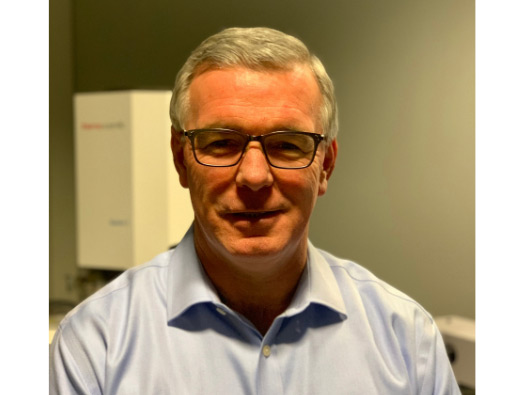The Franklin welcomes first international visiting researcher
We are delighted to welcome our first international visiting researcher, Professor David W. McComb, who will be part of our Correlated Imaging team. Such a partnership is central to enabling the Rosalind Franklin Institute to achieve the vision set out at its inception. Although delayed by the pandemic, we hope that Professor McComb’s visit marks the start of many other visits and the forging of partnerships with the Franklin.
Professor McComb is on research sabbatical from The Ohio State University (OSU), where he is the founding Director of the Center for Electron Microscopy and Analysis (CEMAS). When Professor McComb moved from Imperial College London to OSU to lead the creation of CEMAS a decade ago he recognised the enormous potential of bringing together the physical and life science communities to share techniques and developments. He is therefore excited to be here at the Franklin to continue to build those connections with our biologists and chemists, who are open to exchanging expertise between fields.

Caitlin, our communication’s manager, spoke with Professor McComb some of his goals while here
Professor McComb said, “I am really excited and honoured to have the opportunity to be part of the Franklin team. There are many opportunities for physical scientists to learn from and utilise advances traditionally applied to life sciences and vice versa. For example, in the emerging field of quantum materials there are numerous challenges that can benefit from understanding the remarkable progress that life scientists have made in the development of cryoEM techniques.”
Professor McComb also commented that holding the positions of both Professor and Director of a large facility left little free time. So he is excited by the opportunity to use his research sabbatical time at the Franklin to take a step back and re-imagine his vision for the field.
Whilst at the Franklin Professor McComb will be using his significant expertise, especially in the field of electron energy-loss spectroscopy (EELS), to help the Correlated Imaging team with their plans for their next phase of microscope developments.
Professor McComb said, “For the first time we have the potential to map molecular functionality and use isotopic labelling in cryoEM. This could have huge potential in drug discovery and medicine, as we would be able to see locate molecules in the cell with much improved spatial resolution and potentially gain insight into the biochemical reactions.”
Professor McComb added that to fully realise this vision he needed to partner with like-minded scientists in the life sciences, who could see the potential of this technology and are willing to bring their research problems to help co-develop these technologies. Building these key networks within the Franklin and the UK life science community more broadly is also a key goal for him whilst here.
We look forward to seeing the science made possible by these partnerships.
